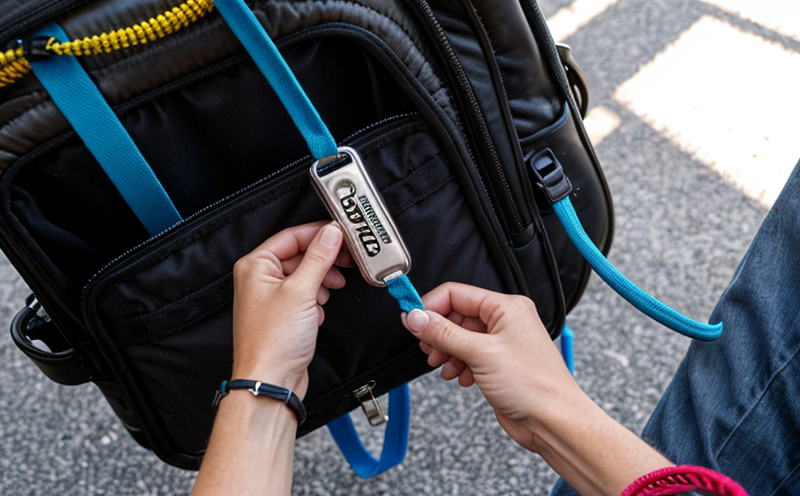Lanyard inspection
In the realm of Personal Protective Equipment (PPE), lanyards play a crucial role in enhancing safety and compliance. Lanyards are essential components that connect protective gear to the user, ensuring that equipment remains securely fastened during critical tasks.
The inspection process for lanyards is designed to ensure they meet stringent standards of durability, strength, and reliability. This process involves a series of tests aimed at identifying potential weaknesses or defects before the product reaches end-users. By adhering to these inspections, manufacturers can guarantee that their lanyards will not fail during high-stress situations.
The inspection typically includes visual examinations for signs of wear and tear, as well as mechanical stress testing to simulate real-world usage conditions. These tests are crucial in preventing accidents caused by the failure of a seemingly simple component like a lanyard. The importance of this inspection cannot be overstated; it ensures that workers remain protected and complies with international standards.
For quality managers and compliance officers, understanding the nuances of lanyard inspections is vital for maintaining high safety standards in workplaces. Compliance with industry regulations not only protects employees but also mitigates legal risks associated with non-compliance. R&D engineers involved in the design and development process can benefit from a thorough inspection protocol to optimize material selection and manufacturing techniques.
Proper lanyard inspection involves meticulous attention to detail, ensuring that every component meets or exceeds specified standards. This includes checking for any deformations, fraying, or other signs of damage that could compromise the integrity of the lanyard. The process is particularly important in sectors where PPE is essential, such as healthcare, construction, and emergency services.
During inspections, engineers often use specialized equipment to simulate real-world conditions under which lanyards are expected to perform. This helps identify any potential issues that might not be apparent through visual inspection alone. For instance, tensile strength tests assess how well the lanyard can withstand pulling forces without breaking.
The importance of thorough inspections extends beyond mere compliance; it fosters a culture of safety and reliability within organizations. By prioritizing quality in every aspect of PPE production, companies demonstrate their commitment to employee welfare and operational excellence.
Applied Standards
| Standard | Description |
|---|---|
| ISO 14631:2019 | Performance, design and test requirements for personal protective equipment (PPE) against falling from heights. |
| ASTM F1587-20 | Standard specification for safety belts and lanyards used in fall protection systems. |
Why Choose This Test
- Ensures compliance with international standards such as ISO and ASTM.
- Guarantees the safety and reliability of lanyards used in critical environments.
- Aids in preventing accidents caused by lanyard failure during high-stress situations.
- Supports R&D efforts to improve design and manufacturing processes for lanyards.
Customer Impact and Satisfaction
- Enhanced safety in critical environments where PPE is essential.
- Increased confidence among end-users regarding the quality of lanyards they use.
- Reduced risk of accidents and injuries associated with faulty lanyards.
- Positive impact on organizational reputation for prioritizing safety measures.





